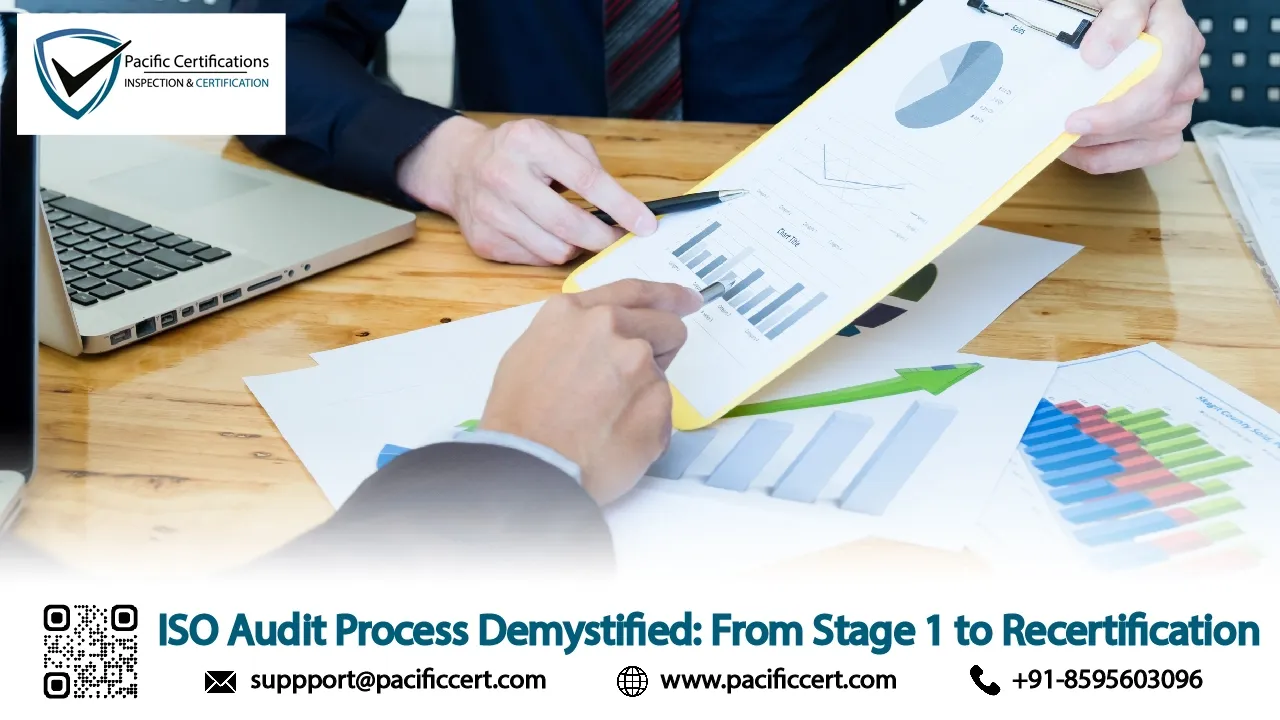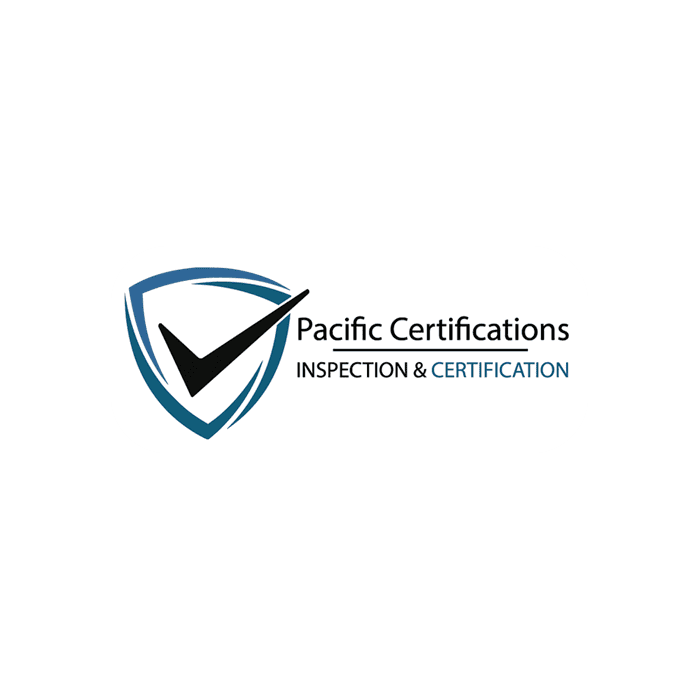ISO Audit Process Demystified: From Stage 1 to Recertification

Obtaining ISO certification takes time and effort but is ultimately a valuable investment that gives organizations the ability to be in line with international standards which promote quality, enable efficiency and support compliance with industry best practice. A key part of the ISO certification process is the audit. The audit is what helps organizations get aligned to the specific ISO standard they are applying for. In this blog we will explore the ISO audit process and all its stages from stage 1 through recertification, in order to inform the what can be expected when undergoing an audit.
For assistance, contact us at [email protected]
Introduction
The ISO audit process is essential in determining your organization’s compliance related to whatever ISO standard your organization has selected. The audit is a formal process undertaken by an accredited certification body, which verifies that your organization has established the appropriate systems and processes to meet the standard. The audit process reviews how your organization meets the appropriate standards required to conform to the certification, as well as the commitment to continual improvement.

While the audit process can seem daunting at first, understanding what happens at each stage and what you can expect will help you through the process without issue. Let's now take a closer look at what happens in the Stage 1 and Stage 2 audits and in the intervening steps to recertification.
Stage 1: Documentation Review and Readiness Assessment
The stage 1 audit is the first of several audits that will map out the ISO certification process. That's why it is important to carry out sufficient review of your organization's documented documentation to ensure that your processes and systems are in place and conform to the requirements of the ISO standard. The stage 1 audit is important to ensure the organization is ready for the stage 2 audit, which will assess whether the processes are being implemented in practice.
To this end, the auditor will complete a stage 1 audit which will involve the following:
1. Review of Documentation: The auditor at stage 1 will review the documented policies, procedures, and records relevant to the organization's management system documentation; the organization's risk management processes; other relevant processes.
2. Evaluate Compliance: The auditor will review whether the organization has fulfilled the obligations for all the key requirements in the ISO standard, e.g., set defined business objectives, identified processes, assigned roles and responsibilities to employees.
3. Preliminary Assessment: The auditor will use stage 1 audit as an opportunity to observe if there are any possible areas of concern within the organization that need to be addressed before the stage 2 audit. The auditor may share feedback, and/or areas for concern and wherever appropriate ask the organization to action corrective actions to ensure readiness of the next stage 2 audit.
Stage 2: Full Certification Audit (Implementation Review)
The Stage 2 audit is the most important stage of the ISO certification process. At Stage 2, the auditor will assess the actual implementation of the processes and systems you documented during Stage 1. Stage 2 is designed to evaluate whether your organization is appropriately following the processes, meeting the requirements and continuously improving.
The key activities of the Stage 2 audit are:
1. On-site Audit: The auditor conducts an on-site audit during which they will check your documented procedures against daily activity to see if they are being followed. This could consist of observing the processes in action, interviewing employees or reviewing records to ensure your organization is meeting the standard.
2. Interviews and Observations: the auditor will interview personnel, related to each of the processes defined in your documentation, to assess each personnel's understanding of the related processes and their role in meeting compliance with the standard.
3. Any corrective actions: If at any time during the Stage 2 audit the auditor finds any non-conformities, or areas for improvement, the auditor will record these non-conformities and request corrective actions. Your organization must complete corrective actions for any non-conformities before the audit can proceed to finalization of the audit and certification.
For assistance, contact us at [email protected]
Surveillance Audits: Maintaining Your ISO Certification
After getting ISO certification doesn't mean your organization is done with ISO. Your company will undergo surveillance audits periodically (usually annually) to verify your organization is still meeting the ISO standard and maintaining the processes required to show continual improvement.
Surveillance audits are meant to make sure your organization continues to comply with the ISO standard and is continuing improvements where required. Surveillance audits will usually not cover the full details of your initial Stage 2 audit. Surveillance audits focus on the verification of continuing compliance with ISO standards, review of corrective actions, and the effectiveness of the management system being operated by the organization. The auditors will review corrective actions taken from previous audits and verify the corrective actions were successful
Recertification: Renewing Your ISO Certification
ISO certifications are usually issued for a three-year period requiring recertification thereafter. A recertification audit is a complete audit of the management system and management practices of your organization, similar to a Stage 2 Audit.
Recertification audits are used to review the effectiveness and sustainability of the management system over the three-year period of the previous certifications. Recertification audits check that processes are still being followed, and the management system is still achieving the intended outcomes. The auditor will need to deal with any non-conformity during and audit if the reason provided to deal with the non-conformity does not align with the recorded issues before reissuing a new certification.
Conclusion
An ISO audit process should be carefully structured and rigorous process that can help ensure organizations are compliant with the requirements of international standards. The audit process is useful for everyone when it comes to applying for an ISO certification from Stage 1 to stage 2 where Stage 1 is focused on determining how ready organizations are for certification, stage 2 where you evaluating the implementation of systems, and continues through the recertification process. It is an ongoing process enabling conformity and continuous improvement.
Although the audit process could seem overwhelming, breaking it down into the individual stages, and expecting what comes at each stage can help you and your organization successfully transition through the certification processes and enjoy the many benefits of ISO certification including operational efficiency, customer satisfaction, and market credibility.
Contact Us
Pacific Certifications can assist your organization in understanding and navigating the ISO certification process. Our team of experts is here to guide you through each stage of the audit process and ensure your continued compliance with ISO standards.
For assistance, contact us at [email protected].
Visit our website at www.pacificcert.com.
FAQs
Q1: How long does the ISO audit process take?
The ISO audit process typically takes several months, depending on the size and complexity of the organization. Stage 1 and Stage 2 audits can take from a few days to several weeks, while recertification audits generally occur once every three years.
Q2: What happens if my organization fails the ISO audit?
If your organization fails the ISO audit, you will receive a report outlining the non-conformities. You will need to take corrective actions and schedule a follow-up audit to address these issues before certification can be granted.
Q3: How can I prepare for the ISO audit?
Preparation for the ISO audit involves conducting internal audits, training employees on the ISO standard, reviewing documentation, and addressing any gaps or non-conformities identified during the gap analysis.
Q4: Do I need to hire a consultant for the ISO audit?
While hiring a consultant is not mandatory, many organizations choose to do so to ensure they are fully prepared for the audit. Consultants can help with process documentation, training, and gap analysis, streamlining the certification process.
Ready to get ISO certified?
Contact Pacific Certifications to begin your certification journey today!
Suggested Certifications –

